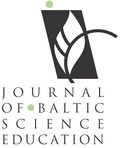NATURAL SCIENCE EDUCATION IMPORTANCE IN ADOLESCENCE
| Title | NATURAL SCIENCE EDUCATION IMPORTANCE IN ADOLESCENCE |
| Publication Type | Journal Article |
| Year of Publication | 2013 |
| Authors | Lamanauskas, V |
| Journal | Journal of Baltic Science Education |
| Volume | 12 |
| Issue | 4 |
| Start Page | 396-398 |
| Date Published | December/2013 |
| Type of Article | Editorial |
| ISSN | ISSN 1648-3898 |
| Other Numbers | ICID: 1067186 |
| Keywords | adolescence period, mature personality, science education, scientific cognition |
| Abstract | In any case, the teacher solves the whole lot of dilemmas and contradictions. Pupils are always different, individual. Teenagers’ individualism is very much expressed. Some of them are getting interested and are interested in a concrete activity, while the others are waiting and can’t wait for the end of the activity. It is obvious, that natural education in adolescence is, as a matter of fact, situational, integral and flexible. The main factors leading to teacher’s success are creativity, skillfullness and erudition. Natural science importance is indubitable. Research studies of the last few decades confirm such position. Science education has been frequently accepted as an inseparable and extremely important part of comprehensive schooling (Lamanauskas, 2008). By natural education we seek personality maturity in a wider sense. It would seem that everything is said concerning this question. However, it is not so. Rapid spread of scientific cognition inevitably raises new challenges for natural education, induces to re-evaluate generally used education strategies and methodologies. There is a rapid development of ICT; their penetration into educational environments is really intensive, though not always adequate to the raising educational goals. On the other hand, our understanding about human brain activity and possibilities is extending. Generally speaking, neuroscience opens new opportunities for people. Even though it is firstly connected with treatment, new treatment methods, on the other hand, the achievements in this field have a great influence on education. |
| URL | http://oaji.net/articles/2015/987-1425808911.pdf |
| DOI | 10.33225/jbse/13.12.396 |
| Refereed Designation | Refereed |
| Full Text |
